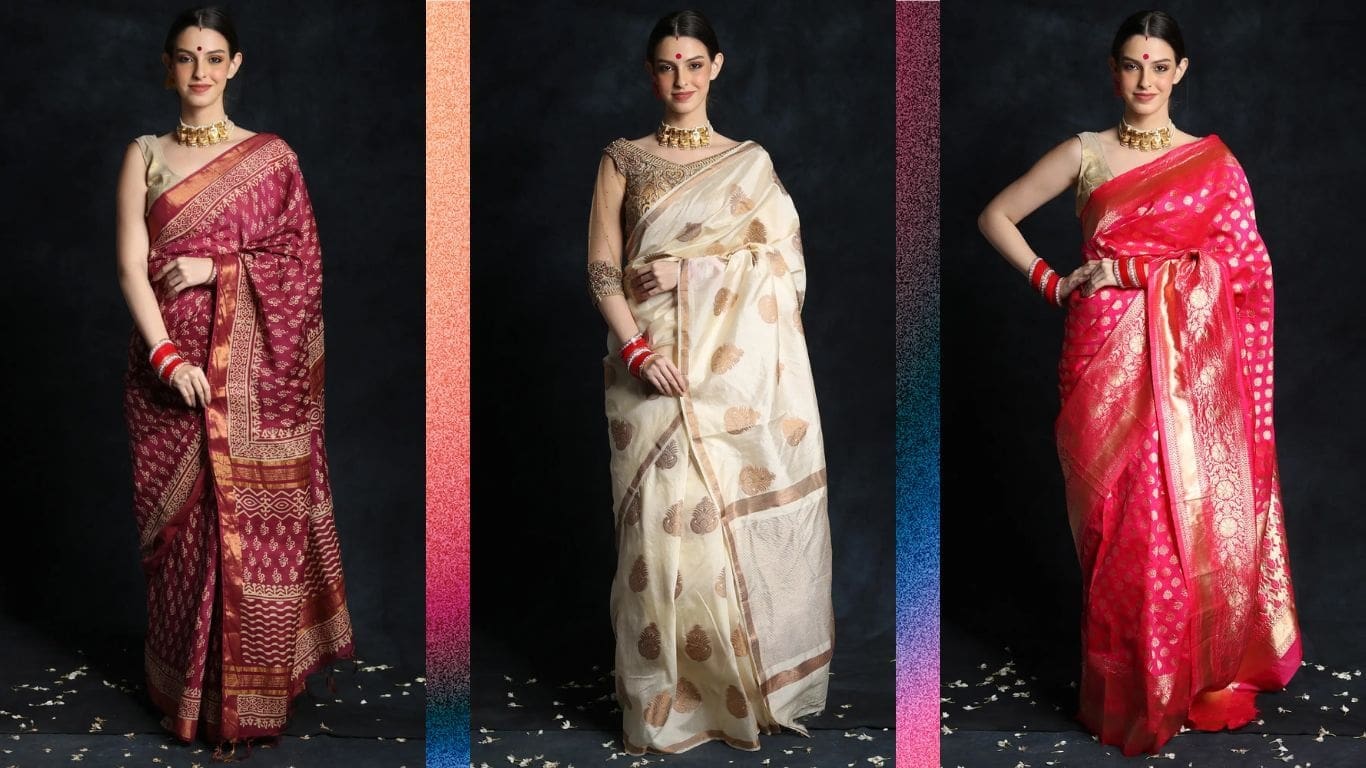Benarasi sarees, a traditional Indian attire, are synonymous with the holy city of Varanasi, where thousands of weavers dedicate their lives to creating these masterpieces. These sarees, known for their intricate zari work, have been an essential part of Indian culture, particularly during weddings, for centuries.
The History of Benarasi Sarees
The origin of Benarasi sarees can be traced back to the Mughal era when Indian and Persian motifs were combined with gold and silver threads, creating a unique fusion of design and craftsmanship. During this period, the demand for Benarasi sarees increased significantly, with weavers eagerly awaiting Mughal patronage.
The zari used in Benarasi sarees was initially made of real gold and silver threads, but due to economic constraints, sela zari was introduced in 1965. Today, Benarasi sarees are not only popular in India but are also exported globally, with the brocade stole being particularly sought after by foreigners.
The Making of Benarasi Sarees
The process of creating a Benarasi saree begins with an artist drawing the design on graph paper using colors. This design serves as the base for the saree, and once approved, hundreds of cards are created to implement the design. The weaving process involves three people working in a row, with one person weaving and the others working on the revolving ring.
Designing the motif is a crucial aspect of creating a Benarasi saree, with traditional weavers in Benaras creating unique designs, even without formal training in designing. While silk for sarees was traditionally sourced from Bangalore, other silk-producing centers like Murshidabad in Bengal and Bhagalpur in Bihar have also emerged.
Types of Benarasi Sarees
Benarasi sarees come in various forms, including ordinary Benarasi, brocade, and tissue, with different hues and designs. Sarees with zari border and zari anchal, as well as those with gold or silver motifs on the whole saree, are particularly popular. The use of horizontal zari work all over the saree creates a unique and elegant look.
Benarasi sarees are not only a popular choice for weddings but are also used for traditional rituals in some North Indian states, where they are considered pure and essential. The demand for specific wedding rituals has ensured the continued popularity of Benarasi sarees.
Affordability and Availability
While Benarasi sarees are more famous in North India than South India, they are affordable and accessible to the general public. The affordability and popularity of Benarasi sarees have made them a staple in Indian weddings and traditional rituals.
In conclusion, Benarasi sarees represent the rich legacy of Indian craftsmanship, with their intricate zari work and unique designs. The continued popularity of these sarees is a testament to their timeless appeal and cultural significance.

